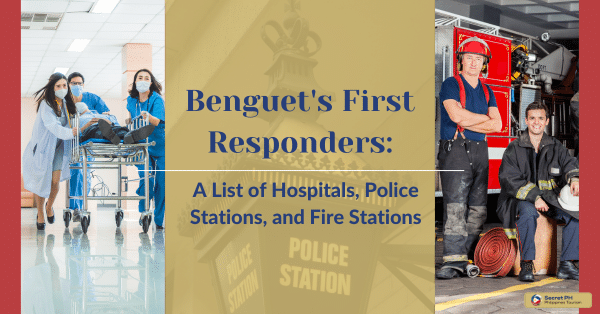The Philippines Helicopter Emergency Medical Services (HEMS) provides rapid response for critical care by offering emergency medical transportation via helicopters. This service is particularly useful for patients in remote or hard-to-reach areas where access to medical facilities is limited. With HEMS, patients can receive immediate medical attention, increasing their chances of survival and recovery.
HEMS has been a game-changer, not just in terms of saving lives, but also in reducing transport times for patients. In this blog, we will take a closer look at how HEMS has transformed the emergency medical landscape in the Philippines, and how it has helped in providing better medical care to those in need.

Philippines Helicopter Emergency Medical Services (HEMS)
The Philippines Helicopter Emergency Medical Services (HEMS) is an essential service that functions to transport patients in times of emergency. With a fleet of advanced medical helicopters, HEMS provides quick and safe transport for patients during critical medical emergencies. Operating across the nation, HEMS operates 24/7 and is always on standby to respond to emergencies. The medical staff is highly skilled and experienced.
They provide medical intervention while in route to the hospital. HEMS pilots undergo rigorous training. This ensures they have the technical expertise to fly helicopters safely in all weather conditions. The Philippines Helicopter Emergency Medical Services (HEMS) provides critical support in emergencies. They make sure patients receive the prompt attention and care required for their well-being.

Services Provided by Philippine’s HEMS Program
The Philippines’ Health Emergency Management Staff (HEMS) Program plays an essential role in providing emergency medical services to the citizens of the Philippines. With highly trained professionals, the HEMS team provides immediate response to medical emergencies. It ensures that patients receive the best possible care.
From air ambulance services to on-site emergency medical care, the program offers a wide range of services to those in need. Through strategic partnerships and collaborations with other health providers, the HEMS program is dedicated to providing timely and efficient medical services across the country.
Emergency Medical Transport
Emergency Medical Transport is a crucial aspect of the healthcare system, especially in times of crisis. The Philippines recognizes the importance of providing swift medical assistance through the Helicopter Emergency Medical Service (HEMS) program. HEMS provides a range of services. This includes inter-facility transport, emergency response, and rescue support.
With a team of highly skilled medical professionals. HEMS ensures that patients receive prompt medical attention, regardless of their location. The program operates across the country and is available for both government and private institutions.

Air Ambulance Services
When emergencies arise, every moment counts. In the Philippines, the Health Emergency Management Service (HEMS) program provides vital air ambulance services to patients in need. This program serves as a lifeline to those who require urgent medical attention, particularly in remote areas where access to healthcare facilities may be limited.
With a dedicated fleet of helicopters and aircraft, highly-trained medical personnel, and state-of-the-art equipment, HEMS can quickly transport patients to hospitals or treatment centers. Additionally, HEMS also provides assistance during major disasters, helping to evacuate and provide medical aid to affected individuals.

Patient Care and Treatment in Flight
The Philippine’s HEMS (Helicopter Emergency Medical Service) program provides a crucial service in the country’s healthcare system. With their primary objective of transporting critically ill or injured patients to medical facilities, the team of healthcare professionals on board work tirelessly to provide the necessary patient care and treatment in the air. With advanced medical equipment on the helicopter, the team is able to perform lifesaving procedures such as intubation, ventilation, and defibrillation.
The HEMS team also provides pain management and stabilization to patients before and during transportation. The program ensures that patients receive the appropriate care and treatment needed during such a critical time, giving them a fighting chance at survival. The Philippine’s HEMS program is indeed a remarkable service and an essential part of the country’s healthcare system.

Why Is HEMS Needed in the Philippines?
The Philippines, with its scattered islands and varied topography, is no stranger to natural calamities. Typhoons, earthquakes, and volcanic eruptions are just a few of the disasters the country has experienced in the past years. These events cause significant damage, both in terms of property and human life.
To mitigate the risks, air medical services, such as Helicopter Emergency Medical Services (HEMS), provide swift medical attention and transport for critically ill or injured patients. HEMS is increasingly needed in the Philippines as most of its rural areas are difficult to access, especially during a disaster.
Cost-Effective Solution to Critical Care
In the Philippines, access to critical care can be a challenging issue as factors such as geographic location and transportation infrastructure can hinder patients from receiving prompt treatment. That is why the country needs a cost-effective solution that can address this concern. One highly valuable solution is HEMS or Helicopter Emergency Medical Services.
By providing rapid transfer of patients to advanced medical facilities, HEMS is a crucial intervention that improves the chances of survival for critically ill patients. It can also cover a wider scope of patient transportation, especially those located in far-flung or disaster-prone areas.

Quick Response Time for Critical Patients
Quick response time is crucial for critical patients in need of emergency medical assistance. In the Philippines, the need for medical air transport has become increasingly evident due to the country’s archipelagic geography, where a significant portion of the population cannot easily access medical facilities. With HEMS (Helicopter Emergency Medical Service), medical professionals can reach remote locations quicker than traditional land-based ambulances, providing urgent medical care that can save lives.
The use of helicopters for medical transportation has become more popular worldwide, and the Philippines is no exception. This service can help bridge the gap in the accessibility of medical facilities, especially in the rural areas of the country, where reaching medical help can sometimes be a life-or-death situation.

Accessibility to Remote Communities
Accessibility to remote communities has been a major issue in the Philippines for many years. This is where HEMS, or Helicopter Emergency Medical Services, comes into play. HEMS can save thousands of lives by providing assistance to people living in remote areas where medical attention is limited or non-existent. The rugged terrain and the scattered nature of the Philippine islands make it particularly challenging for residents who live in far-flung areas to receive timely medical attention.
With the introduction of HEMS, medical professionals can now transport emergency medical equipment and personnel, to where they are needed most. This is a crucial step towards ensuring that everyone, regardless of where they live, has access to quality healthcare.

Challenges Faced by Philippine’s HEMS Program
As a developing country with a vast geography and diverse population, the Philippines has always had to navigate through a multitude of challenges, especially in the healthcare sector. The Helicopter Emergency Medical Services (HEMS) program, in particular, has faced a number of obstacles that have hindered its ability to provide timely and efficient emergency medical care. Despite these challenges, the Philippines continues to make strides in improving their HEMS program and ensuring that emergency medical care is accessible to all.
Limited Resources and Funding
One of the major challenges faced by the Philippine’s HEMS program is the limited resources and funding. The healthcare system in the country is constantly facing financial constraints, which directly impacts the development and operations of HEMS. The equipment and supplies are often outdated, which compromises the quality of care provided to patients.
Despite these challenges, the HEMS program continues to strive towards improving their services. They have implemented innovative strategies to overcome the limited resources and provide top-notch medical care in emergency situations. The skilled healthcare professionals involved in the program work tirelessly to ensure that every patient receives the best possible care, regardless of the circumstances.

Proper Training and Equipment
Proper training and equipment are critical factors in ensuring the success of health emergency medical services (HEMS) programs. In the case of the Philippines, this has been a significant challenge in establishing an effective HEMS system nationwide. The lack of specialized emergency medical training programs and insufficient funding for equipment hinder the progress of HEMS.
Additionally, a significant proportion of Filipino HEMS staff may not have access to adequate training, which is essential in enhancing their capabilities and confidence. Efficient HEMS programs also necessitate the use of updated equipment and resources for optimal results.

In Conclusion
The Philippines Helicopter Emergency Medical Services is indeed a critical intervention that can bring much-needed rapid response for critical care. The program ensures that those in need of emergency medical attention can receive timely care even in the most remote parts of the country. Providing such lifesaving care often requires a professional and highly trained team of medical personnel, as well as cutting-edge medical equipment.
The program’s success is a clear indication of the government’s commitment to ensuring access to quality healthcare for all Filipinos. With such a program in place, the country is equipped to handle emergency medical situations effectively and efficiently, ultimately saving lives.








